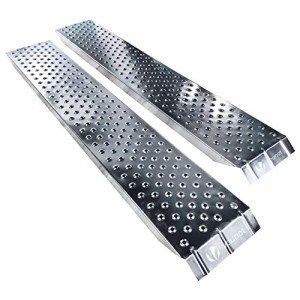
Portable Ramp Wheelchair
Add a review FollowOverview
-
Founded Date August 31, 1919
-
Posted Jobs 0
-
Viewed 5
Company Description
Why All The Fuss Over Wheelchair Ramps For Mobile Homes?

Wheelchair Ramps for Mobile Homes: Accessibility Solutions for All
As society progresses towards higher addition, availability in all aspects of life has actually ended up being critical, particularly for individuals who need mobility assistance. Mobile homes, often admired for their cost and flexibility, can in some cases present obstacles for wheelchair users. Wheelchair Ramps For Disabled can supply a crucial service, ensuring that everyone has equal access to their living spaces. This article will delve into the significance of wheelchair ramps for mobile homes, the various types available, and factors to consider for setup.
Table of Contents
- Significance of Wheelchair Ramps
- Kinds Of Wheelchair Ramps for Mobile Homes
- 2.1 Portable Ramp For Wheelchair Ramps
- 2.2 Semi-Permanent Ramps
- 2.3 Permanent Ramps
- Material Considerations
- Installation Guidelines
- Upkeep Tips
- Often Asked Questions (FAQs)
- Conclusion
1. Importance of Wheelchair Ramps
Wheelchair ramps are vital for individuals with restricted mobility for various reasons:
-
Independence: Ramps supply people with the capability to go into and exit their homes without requiring assistance, fostering autonomy.
-
Safety: The absence of a ramp can cause mishaps and injuries, particularly for those with mobility devices. Ramps reduce these risks by offering a stable, gradual slope.
-
Inclusive Living: As more people choose mobile homes for their affordability and mobility, making sure that these homes are accessible is crucial for creating inclusive neighborhoods.
2. Types of Wheelchair Ramps for Mobile Homes
When selecting a ramp for a mobile home, various choices are created to meet particular requirements and choices.
| Ramp Type | Description | Pros | Cons |
|---|---|---|---|
| Portable Ramps | Lightweight, simple to transfer and set up. Often made of aluminum or fiberglass. | Versatile and practical for temporary use. | May not be durable for long-term usage. |
| Semi-Permanent Ramps | Fixed in location however can be eliminated if essential. Generally more stable than portable ramps. | Provides a balance between versatility and stability. | Some assembly needed; may need permits. |
| Long-term Ramps | Developed directly into the home structure, frequently developed to fulfill regional building regulations. | Highly resilient and tailored to specific needs. | More pricey and typically needs expert setup. |
2.1 Portable Ramps
Portable Ramp ramps are particularly appropriate for those who might need mobility help periodically. They can be quickly set up and eliminated, making them ideal for temporary accessibility options.
2.2 Semi-Permanent Ramps
For individuals searching for a solution that balances flexibility and stability, semi-permanent ramps are an exceptional option. They offer the advantage of being semi-fixed while still permitting removal if circumstances alter.

2.3 Permanent Ramps
Permanent ramps are best matched for long-term homeowners who require constant ease of access. These ramps can be custom-built to fit the particular layout of a mobile home, ensuring optimum usability and aesthetic appeal.
3. Product Considerations
The product of the ramp considerably affects its resilience, upkeep needs, and aesthetic compatibility with the mobile home.
- Aluminum: Lightweight and rust-free, making it an ideal alternative for Portable Ramps For Wheelchair Access ramps.
- Wood: Offers a traditional appearance and benefits permanent ramps but requires routine maintenance to prevent rot and splinters.
- Fiberglass: Strong and lightweight, resistant to weather and UV rays, making it appropriate for different environments.
4. Installation Guidelines
Installing a wheelchair ramp requires careful planning and execution. Here are some crucial steps:
- Assess the Area: Measure the height from the ground to the entryway to determine the ramp’s length.
- Check Local Regulations: Many areas have specific codes concerning ramp setup, consisting of slope and product considerations.
- Select a Design: Based on the meant usage and area, choose the ramp type and product.
- Gather Tools: Ensure all needed tools and materials are all set before commencing.
- Installation: If you are not comfy with DIY installations, think about hiring a professional.
5. Upkeep Tips
Keeping a wheelchair ramp makes sure security and longevity. Here are some useful maintenance pointers:
- Regular Inspection: Check for any loose bolts, signs of wear, or damages at least biannually.
- Tidy: Keep the surface tidy from particles, especially in areas that may collect rain or snow.
- Weather-proofing: If using wood, use sealant or paint to safeguard versus wetness damage.
- Look for Slippage: Regularly inspect the surface for needed traction enhancements, especially throughout wet or icy conditions.
6. Often Asked Questions (FAQs)
Q1: What is the perfect slope for a wheelchair ramp?
A1: The Americans with Disabilities Act (ADA) suggests a slope ratio of 1:12, meaning for every single inch of rise, there should be at least 12 inches of ramp run.
Q2: Can I set up a ramp myself?
A2: DIY installation is possible for portable ramps, but irreversible and semi-permanent ramps might need professional support to guarantee they satisfy safety standards.
Q3: How wide should a wheelchair ramp be?
A3: A minimum width of 36 inches is advised to accommodate most wheelchairs and mobility gadgets conveniently.
Q4: Do I require an authorization to set up a ramp?
A4: Many areas need an authorization for irreversible ramp installations. It is necessary to contact regional guidelines before starting the process.
7. Conclusion
Wheelchair ramps are not simply devices; they are vital features of mobile homes that help with ease of access and self-reliance for individuals with limited mobility. By picking the right type of ramp, materials, and setup methods, anybody can enhance their living area’s safety and ease of access. With continuous advancements in design and security standards, the journey towards inclusive living environments continues to move forward, enabling everybody to take pleasure in life with dignity and independence.